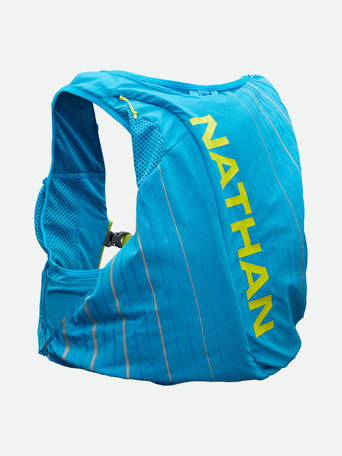As the Summer Heats Up, Athletes Should Prepare for the Risks That Come With Runnin’ in the Sun
With a cloudless sky and perfect tanning weather, who would complain about a nice run in the summer sun? Well, summertime running is not quite as glamorous as it may seem. With flowers in full bloom and trails full of happy families and dog walkers, even the picture-perfect views that come with summer can come with some not-so-pretty consequences:
Dehydration
Distracted at work and forgot to  stop at the water cooler, or accidentally left your water at home? These are the unfortunate, but all too real, realities of day-to-day dehydration. However, heat exposure and exercise accelerate the process of dehydration, often putting the health of runners at risk.
stop at the water cooler, or accidentally left your water at home? These are the unfortunate, but all too real, realities of day-to-day dehydration. However, heat exposure and exercise accelerate the process of dehydration, often putting the health of runners at risk.
Always wear breathable clothing, hydrate before and after your workout, and avoid peak UV hours. A hydration vest or cooling hat can also make a big difference in performance and safety.
Mayo Clinic explains that sweating—especially when exacerbated by hot weather—results in high fluid loss that expedites dehydration. So, when in combination, exercise and heat can be dangerous for summer athletes. In fact, according to the Huffington Post, rapid dehydration can begin after 30 minutes of activity in the sun, resulting in dizziness or nausea. But there is a bright side: the solution is simple with Nathan.
Whether hydration packs or handhelds, all Nathan hydration products protect from the damage of summertime running. One of the best remedies for dehydration is proactive and retroactive rehydration when exercising in hot weather, as per Cedars Sinai.
Sun Damage
Everyone enjoys a nice tan and their daily dose of Vitamin D, but sun damage is serious, especially in the summer months when UV rays reach harmful levels. Studies show that marathon runners are at a high risk for malignant melanoma—the most aggressive form of skin cancer. Due to their frequent time outdoors, runners should be the first to grab SPF 30 and the last to skimp out on sun protection.

Heat Illness
From heat cramps to heatstroke, heat-related illnesses can vary in severity, but all occur when exposed to high temperatures. These sicknesses are serious, harmful, and exacerbated by physical activity. According to the CDC, the most dangerous of these illnesses is heatstroke, which can exhibit symptoms such as confusion, loss of consciousness, and even seizures. Less severe forms of heat-related illness, such as heat cramps and heat exhaustion, can cause muscle spasms and dizziness, respectively.
Fortunately, heat-related illness is preventable with proper hydration, rest, and protective gear. If you plan to run in the strong summer sun, hydrate before your activity and pop on a Run Cool Stash Hat —with visor shade and a hidden pocket for stashing ice, your face and head will stay nice and cool on extra sunny days.

If you’re training for an ultra, but it’s 95 with high humidity, reach for the Pinnacle FeatherLite 1.5L Hydration Vest. The FeatherLite delivers ample hydration, and its ultra-lightweight design guarantees breathability so you stay cooler—an ideal combo for avoiding overheating and heat-related illness.
Sun Safety Monthly Average UV Index 2006 – 2023, December vs July (U.S. Environmental Protection Agency)




Comments